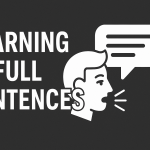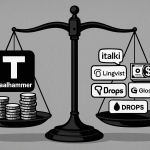Whatever language-learning method you are using, one thing remains the same: you need to memorise a large amount of information (typically thousands of words and patterns) and develop reflexes that enable you to recall this information efficiently when you need it.
To help language learners with such a mundane task, we took the best available scientific ideas about how human memory works and integrated them into a language-learning application.
It all started when we met in Amsterdam and wanted to learn Dutch. We shared two important things: passion for learning languages and struggles in learning them efficiently. As we were both software engineers, we also saw the shortcomings of existing language apps. We experimented with some well-known memorisation techniques and some software engineering. It worked like a charm. The Taalhammer app was born.
In this article, we will show you how you can use the Taalhammer app to hack your memory for language learning. Although we are going to use Dutch as an example, the methodology can be applied to any other language with the same success.
What Makes Working Memory so Important for Language Learning
Your journey to memorisation starts with the working memory, also called the short-term memory. It is here your brain manipulates newly learned words and sentences. Short-term memory is limited in capacity (can hold 5 to 8 elements) and persists for only a maximum of 30 seconds.
Picture the short-term memory as a funnel through which you are pouring water. If you pour slowly, all of the water can go through the funnel. But if you pour too fast, the funnel gets backed up, and some of the water pours out.
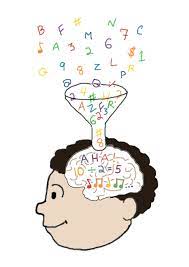
In language learning this is what happens when you try to learn too many new things at once.
You learn a lot, but you do not remember much.
If the Exercise is Too Easy, You Will Not Learn Anything (Taalhammer Board)
This is why in Taalhammer we always start learning by showing you five language elements on what we call a Board.
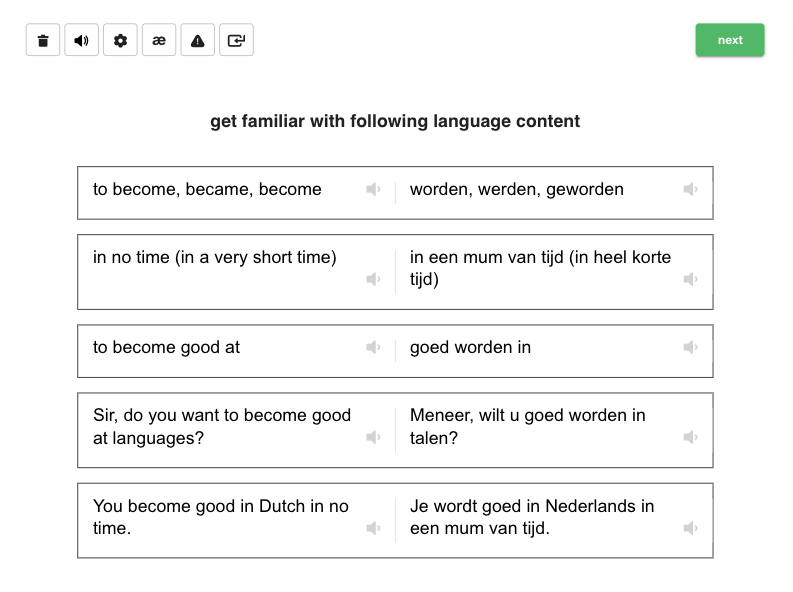
Listen to these elements by clicking the speaker icon, and then repeat them loudly and clearly, trying to parrot what you have heard. Go through all the elements and make the first mental note if you remember them. By doing this, you are creating the very first memory traces in your short-term memory.
As soon as you think you remember them, click NEXT and we are going to ask you to recall the answers from your working memory, one by one.
This seems to be an exercise like any other, but it has a huge advantage — we force our brain to work harder by taking several elements at once and trying to remember them for a while.
How to Create Mental Reflexes with Taalhammer Flashcards
Your main learning element is the flashcard. We’ll show you a word or a sentence in your source language, with an image to help it stick better.
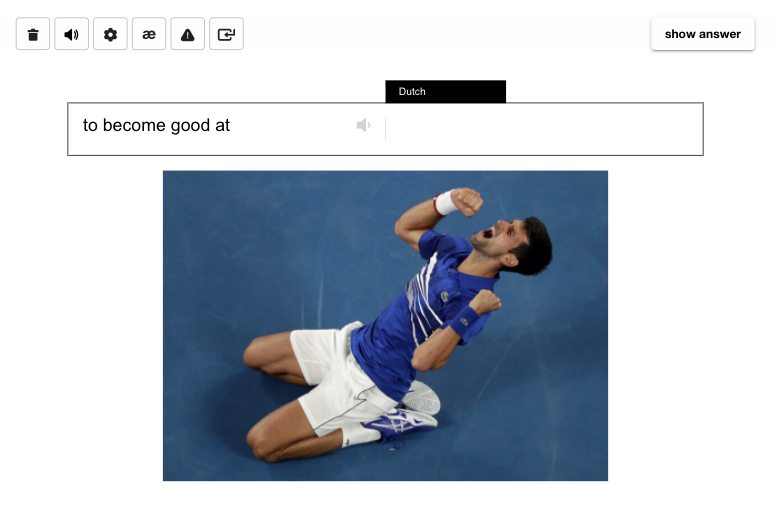
Now see if you know the translation. If you do not know it immediately, don’t press SHOW ANSWER too quickly. Put some serious effort into scanning your memory – it works analogously to lifting weights that are just too heavy for now. It trains your memory muscles. Always repeat the answer aloud, ideally to another person. Finally press SHOW ANSWER. You will hear the audio and see the translation.
So how can you hack your memory even more?
Start by playing the source and target one after another a few more times, and then repeat aloud again. This will create mental reflexes. Then deliberately focus on the meaning, visualising objects and situations. Try to find any other words that resemble the answer — even nonsensical words would do the job. Our brain remembers better if new information is somehow similar to information you already know.
Then look at the pronunciation transcription, and even if you don’t know the symbols yet, they will strengthen the reflexes even more – and they will later fire every time you hear or see it in your language.
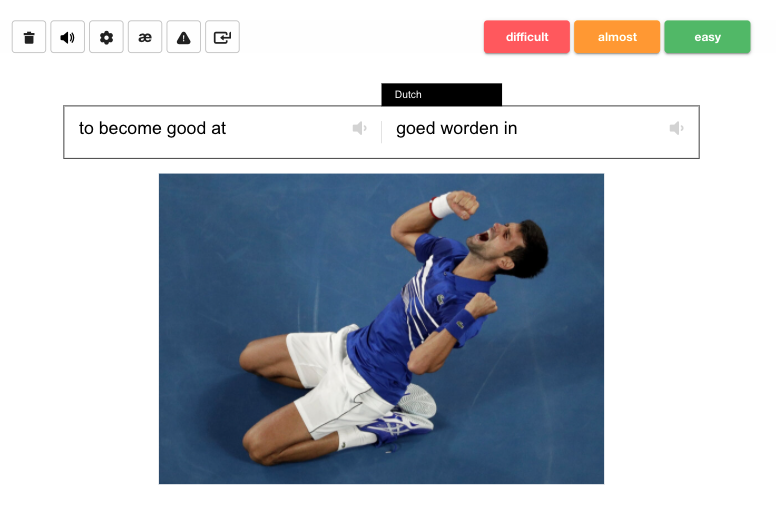
Finally evaluate yourself. Was it EASY? Did you ALMOST know it? Or was it DIFFICULT? Your evaluation will be subject to the Atom Algorithm, which is our implementation of the well-known Spaced Repetition technique.
Use Spaced Repetition and Forget about Forgetting
So what is Spaced Repetition? It is arguably the most powerful technique to improve your brain’s ability to recall what you study.
Over 100 years of research shows that information is lost over time if you don’t try to retain it. In practice this means that, if you do not repeat systematically, you will forget 90% of what you have learned within the first month. The phenomenon is referred to as the Forgetting Curve.
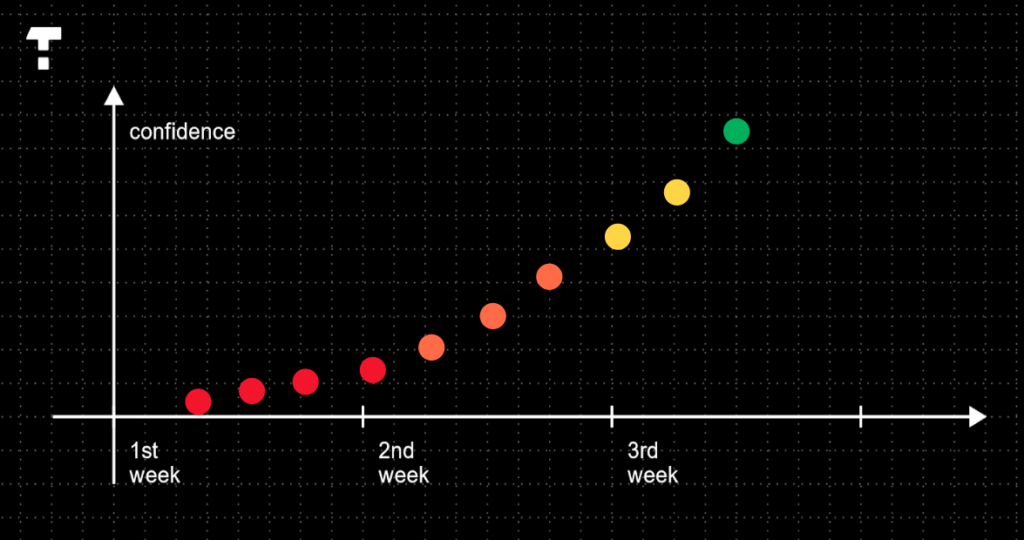
The solution to this problem is a memory phenomenon called the Spacing Effect, which describes how our brains learn more effectively when we space out our learning over time. In language learning this means that you should repeat a word or sentence a few times, spread over several weeks, in order to remember it — five to seven repetitions are usually enough to remember it forever. If you follow this process on a regular basis you can expect to retain information with 90 to 95 percent accuracy. Over a year this allows you to retain more than 10,000 words or sentences!
So how do you know when you should repeat? Well, when you evaluate yourself as EASY, ALMOST or DIFFICULT, the Atom Algorithm will use this to plan your repetitions so you will repeat less and remember more.
It is like building a brick wall: if you stack the bricks up too quickly without letting the mortar between each layer solidify, you’re not going to end up with a very good wall. Spacing out your learning allows that “mental mortar” time to dry.
Three types of Learning Queues in Taalhammer
While studying with Taalhammer, you will work with three types of queues: Homework, New Material and Drill.
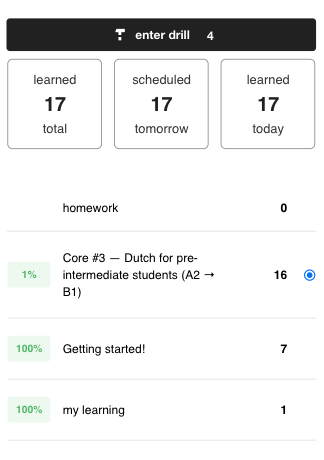
You always start with your HOMEWORK, which is all the items you have already seen and that the Atom Algorithm has scheduled for repetition today. Go through all the elements you have planned for today and evaluate yourself. The ones that are EASY will no longer appear in your repetitions for today. The ones you find DIFFICULT, or the ones you ALMOST know, are automatically put into a queue called the DRILL.
Once you’ve finished your homework, the application will automatically start serving NEW material from the collections you’re subscribed to. You will see the blue dot moving from the HOMEWORK to one of your collection on the overview.The new material will be always in groups of five on a board, followed by the individual flashcards as discussed above. Everything that was not EASY ends up in the DRILL queue.
So what is this drill queue?
Drill is where you start to commit words and sentences to your memory by hammering them into your head. It’s simply a queue of items that holds all elements that you were not sure about today. When you enter DRILL mode (by clicking on the black DRILL button with Taalhammer logo), you will be repeating those elements again and again, as long as you need — until you can answer EASY to all of them. You only need to answer EASY once and the application will no longer ask you about this item today. If, on the other hand, you have trouble with a particular element and evaluate yourself negatively, the algorithm will continue to show you that element as long as it takes you to remember it.
There is an interesting phenomenon — the more elements you have in the Drill, the stronger it works on your memory. This is because we force our brain to work harder. Clearing the Drill queue to zero when it has 10 or 20 elements is quite simple and fast. Doing the same with a queue of 100 items, that we don’t yet know so well, is much more difficult. Forcing our short-term memory to juggle a large number of items makes it very difficult so our brain is quicker to harness our long-term memory to help us — and that’s exactly what we want.
However, you shouldn’t worry if you don’t have time to clear the queue each day; the algorithm schedules repetitions in the following days anyway.
Why is Long-term Memory Essential for Fluency in Foreign Languages?
Remember when we talked about short-term memory? This is also the gateway to long-term memory – the storage of information over an extended period of time. The drill transfers information from short-term memory to long-term memory.
Long-term memory can be divided into explicit and implicit. The explicit is the “knowing that” kind of memory – it is conscious and includes knowledge about individual words or grammatical rules. Unfortunately it is not enough.
In order to speak the language fluently and with confidence, we need to transfer the knowledge into the implicit memory, which is the unconscious, “knowing how” kind of memory. It includes, among other things, knowledge of the structure of the languages (i.e. grammar) and how words can combine with other words (i.e. the collocations).
How to create this unconscious knowledge of language is the topic of the second part of this article which you find right here. (How to hack your memory for efficient language learning with Taalhammer (Part 2)) We also discuss why you should learn a language by memorising sentences, how to easily create your own curriculum, and how sleep and physical exercise can further help you hack your memory for language learning.
If you you are interested in more information about how your brain learns a language, watch the talk “Efficient language learning for all: What your brain needs to do” by Helen Abadzi.
Do you want to put the ideas into practice?
Go to www.taalhammer.com and start learning a language right now!




